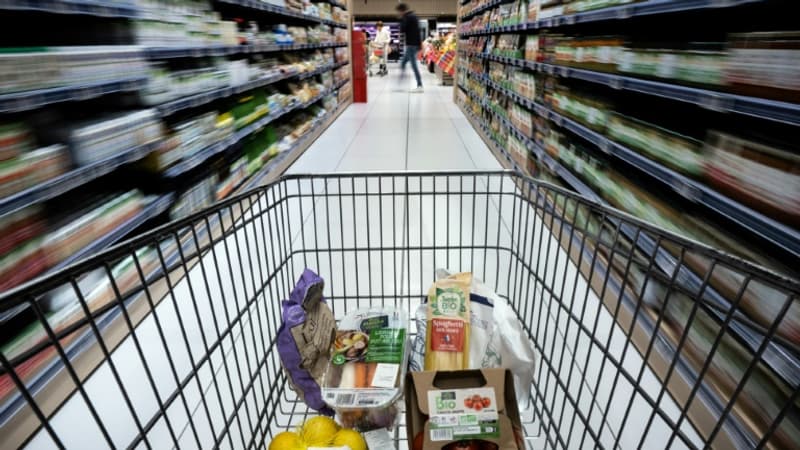Food prices continue to rise and certain trends are gaining momentum. Among them, the greater orientation of French consumers towards local brands.
According to a study by panelist NielsenIQ made public a few days ago, the local dimension is gaining importance among the French. Thus, almost a quarter of them consider what is local very important when only 11% have this consideration regarding what is ecological. Furthermore, 61% of French respondents prefer a local non-organic product to a non-local organic product. In hypermarkets and supermarkets, the turnover of local brands increased by 2.3% in one year, while it fell by almost 5% for national organic brands.
What is a local brand?
As part of this study, NielsenIQ qualifies as “local” brands for which at least half of the revenue is generated in one of the nine reference regions determined by the panelist: region I (Île-de-France), II North (Hauts-de-France), III North (Brittany and much of Normandy), II East (Great East), II South (Pays de la Loire, almost all of the Centre-Val de Loire and half north of New Aquitaine), V West (rest of New Aquitaine and western part of Occitania), V East (rest of Occitania and PACA), IV East (eastern part of Auvergne-Rhône-Alpes and Burgundy-Franche-Comté) and IV Center.
The “Paysan Breton” brand and its turnover of 225 million euros, therefore, is not considered a local brand because it reaches only 22% of its sales in supermarkets in Brittany (III North).
A significant success in the Grand-Est
Nielsen lists nearly 14,000 local brands representing 57% of brands sold with a turnover of €3 billion, or a 4.6% market share. A large majority (87%) of local brands have a turnover of less than one million euros, but their aggregation weighs only a third of the total turnover of 3,000 million euros. A second third is made up of local brands whose turnover fluctuates between 1 and 5 million euros, while the last third is made up of brands that exceed this threshold of 5 million euros. On average, local brands obtain 76% of their turnover in their region of origin.
The panelist sees a link between the regions where local brands have the most significant market shares and those where the percentage of French people who say they are proud of their region is higher. It is in Brittany that this feeling of pride is most widespread (94%) and the market share of local brands is 6.4%. Only the Grand Orient does better with a 7.9% market share and the feeling of pride worries 92% of the inhabitants there. On the other hand, only 74% of Ile-de-France residents feel this way and the market share for local products is one of the lowest there, at just 2.6%.
Breton Hénaff’s pork paté is a success
Specifically, the Breton brand of pâtés and rillettes Hénaff is the leading national brand in France with a turnover of 40 million euros. It is followed by the delicatessen Maison Milhau and its 28.4 million euros, then the Alsatian caterer Pierre Schmidt who completes the podium with a turnover of 26.1 million euros. In the top 10 local brands with the highest sales in supermarkets, the first three achieve just over half of their sales in their region of origin. Far from the 84% turnover registered by Alsace Lait and Saint-Amand Water in their respective regions.
In terms of references, several liquid drinks dominate the regional ranking, from the 75cl Meteor beer bottle in Grand Est (3.7 million euros in turnover) to the 6-pack of Saint Amand water bottles in Hauts-de -France (10 million euros) through the pack of 6 bricks of Lescure milk in the west (5.6 million euros) or the pack of 6 bottles of sparkling mineral water from Corsica de Orezza in the southeast (2, 8 million euros).
Apart from liquids, regional specialties stand out, such as Hénaff pork pâté which raises 4.4 million euros for the Breton brand, the Pogne de Romans brioche which generates 3.5 million euros for Délices dauphinois or fat of beef to fry from the Paturages des Flandres in the North and the bottle of Melfor vinaigrette in the East, whose sales are around 3 million euros each.
Greater market share among fresh and minimally processed products
Local brands do not weigh the same according to the shelves. Nielsen thus points out that its market share has increased in the fresh food section (almost 10% among fresh non-dairy products and more than 6% among fresh dairy products). This is followed by the department of alcoholic beverages and salty foods, for which the market share of local brands is just under 5%. This market share is very low in the departments of beauty, maintenance or paper products, where it does not even exceed 1%.
By refining the analysis a little more at the scale of the sub-departments, the panelist observes that the weight of local brands is accentuated for eggs (more than 35% market share) and in general for minimally processed products such as delicatessen and self-service. fresh meat (about 10%). On the other hand, local brands are hardly represented among dental products, baby food, dishwashers or laundry care.
Source: BFM TV


